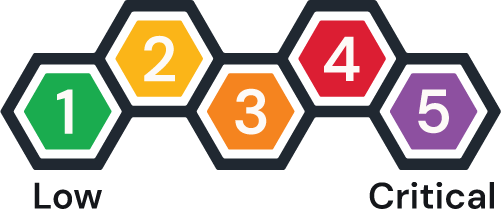Critical SimpleHelp Vulnerability (CVE-2024-57727) Exploited by Ransomware Groups
Ransomware groups are actively exploiting a critical vulnerability in SimpleHelp RMM software. CVE-2024-57727 impacts versions 5.5.7 and earlier - and CISA says it’s being used in real-world attacks. Learn how to check if you’re at risk and what to do now to stay protected.
Risk Level
Read Time
“What’s happening with SimpleHelp and CVE-2024-57727?”
Ransomware actors are consistently exploiting a path traversal vulnerability, CVE-2024-57727, in SimpleHelp Remote Monitoring and Management (RMM) software. These attacks, aimed at compromising organizations, were confirmed as early as January 2025.
The Cybersecurity and Infrastructure Security Agency (CISA) issued an advisory detailing the exploitation of this vulnerability in ransomware campaigns. The advisory highlights a notable incident involving the compromise of a utility billing software provider by DragonForce ransomware actors. The actors frequently utilize double extortion tactics, where they not only encrypt data but also threaten to leak it.
This campaign isn't limited to one organization; according to CISA, the noted activity represents a broader pattern of targeting organizations that have failed to patch outdated versions of SimpleHelp (5.5.7 and earlier).
CISA added CVE-2024-57727 to its Known Exploited Vulnerabilities (KEV) Catalog on February 13, 2025, underscoring the critical nature of this flaw and its rapid adoption by hackers.
“Am I/my companyat risk?”
SimpleHelp might be in use without your knowledge, either directly, or embedded within third-party software. To determine your exposure:
Check your SimpleHelp server version: If it's 5.5.7 or earlier, consider it vulnerable.
Inspect endpoints running the remote access service (RAS):
Windows: %APPDATA%\JWrapper-Remote Access
Linux: /opt/JWrapper-Remote Access
macOS: /Library/Application Support/JWrapper-Remote Access
Use the serviceconfig.xml file to check the server connection and scan for suspicious files like aaa.exe, bbb.exe, etc., created after January 2025.
“What should I do if I’m using SimpleHelp?”
CISA outlines clear, urgent actions that every affected, or potentially at-risk organization, should take:
Isolate or Shut Down SimpleHelp Servers Immediately
If you’re running an outdated version, assume compromise and stop permitting internet access to the server.Patch Immediately
Upgrade to the latest SimpleHelp version following SimpleHelp’s official advisory.Alert Customers and Partners
If you’re a vendor or managed service provider (MSP), inform downstream customers, and direct them to secure their environments.Hunt for Threats
Perform deep scans and forensic reviews for signs of compromise, especially new executables and unusual outbound traffic.Rebuild if Compromised
If a ransomware payload is detected, disconnect the system, wipe it, and reinstall from clean backups.
“How Can I Stay Ahead of Future Exploits?”
As this incident shows, prevention is far less costly than response. These best practices are strongly recommended across all infrastructure:
Maintain Asset Inventories – Know what's on your IT network.
Perform Offline Backups – Back up daily to external devices and remove them after use.
Minimize Remote Access Exposure – Disable or secure RMM tools like SimpleHelp from the public internet.
Communicate with Vendors – Stay informed about patch cycles and embedded third-party software.
Software Bill of Materials (SBOM) – Consider implementing an SBOM to identify and respond to known vulnerabilities faster.
“Where can I get help with this?”
The exploitation of CVE-2024-57727 is yet another reminder that unpatched software is one of the most exploited attack vectors today. The path from vulnerability to active exploitation is shrinking and organizations must be proactive.
Not sure where to start? Our experts at Hive Systems are here to strengthen your organization’s security posture from every angle! Whether you need help crafting robust policies, implementing technical solutions, or providing security training to your workforce, we’ve got you covered. Get in touch with us today and let’s enhance your security together!
Follow us - stay ahead.




